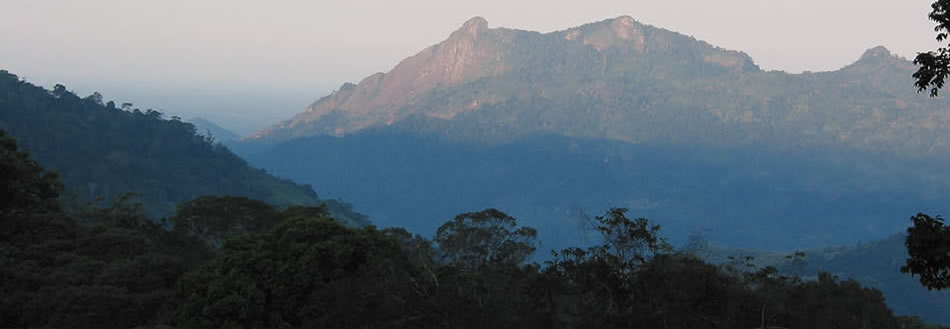The Eastern Arc Mountain forests sustain the lives of millions of people living in Eastern Tanzania by providing a clean and reliable supply of water and protecting fragile mountain soils. The forests are a vital source of non-timber forest products including fuel and food for millions of rural people. The forests are also a biodiversity hotspot home to hundreds of species found nowhere else on earth and store as much as one hundred million tons of carbon which might otherwise be released into the atmosphere to contribute to climate change.

Supporting the lives of millions of Tanzanians• Water supply for more than 3.5 million Tanzanians • Storage for over 100 million tones of carbon • More than 100 endemic vertebrates and 800 endemic plants • Soil protection for hundreds of thousands of farmers |
||
What are the Eastern Arc Mountains?Originally encompassing 23,700 sq. km and stretching in scattered mountain blocks from the Taita Hills in southern Kenya to the Udzungwa Mountains in southern Tanzania, the Eastern Arc Forests are among the oldest and most biologically diverse forests in the world. The main mountains, from north to south, are: Taita Hills, North and South Pare, West and East Usambara, North and South Nguru, Ukaguru, Uluguru, Rubeho, and Udzungwa. A global heritageBelieved to be tens of million years old, these forests contain high levels of endemic plant and animal species. The mountains of the Eastern Arc are remnant islands of the once greater tropical forest that extended from east to west across Africa. As geological and climatic changes occurred, the forests retreated leaving small patches at higher elevations. The monsoonal rains from the Indian Ocean directly influence and sustain the unique biological characteristics of the forests. By 2003, it was estimated that less than 3300 sq. km of forest remained. Extraordinary biodiversity valuesThe Eastern Arc Mountains are part of the Eastern Afromontane Biodiversity Hotspot according to Conservation International and are one of WWF’s Global 200 priority ecoregions. The Eastern Arc mountains contain at least 800 endemic plant species, 10 endemic mammals, 19 endemic birds, 31 endemic reptiles and 40 endemic amphibians. The 2006 IUCN Red List identifies 78 vertebrate species as threatened in the Eastern Arc Mountains including 8 critically endangered species. Twenty out of twenty-one species of African Violet found in the Eastern Arc Mountains are endemic. |
Tanzania’s water towersThe forests are highly important for the livelihood and well-being of millions of Tanzanians. The Uluguru Mountains, for example, are the main source of water for Dar es Salaam, home to 10 % of the Tanzanian population. The forests also generate a significant percentage of Tanzania’s electricity through hydrolectric power plants. The forests also provide medicinal plants, fuel wood, forest foods and building materials for forest adjacent communities. These same local communities retain a wealth of indigenous knowledge about the forest’s flora and fauna that has been poorly documented and is at risk of being lost forever. Forests under pressureToday, the Eastern Arc Mountain Forests are under severe threat. Since the 1970s more than 12 % have been cleared. The main threats are: agriculture (both commercial and subsistence), fire, logging and mining. In the East Usambaras the rate appears to be higher at around 30 % over the same time period. As Tanzania’s population continues to grow, the pressures on the forests will become even more significant. TFCG has projects in six Eastern Arc Mountains:West Usambara Mountains |
|
